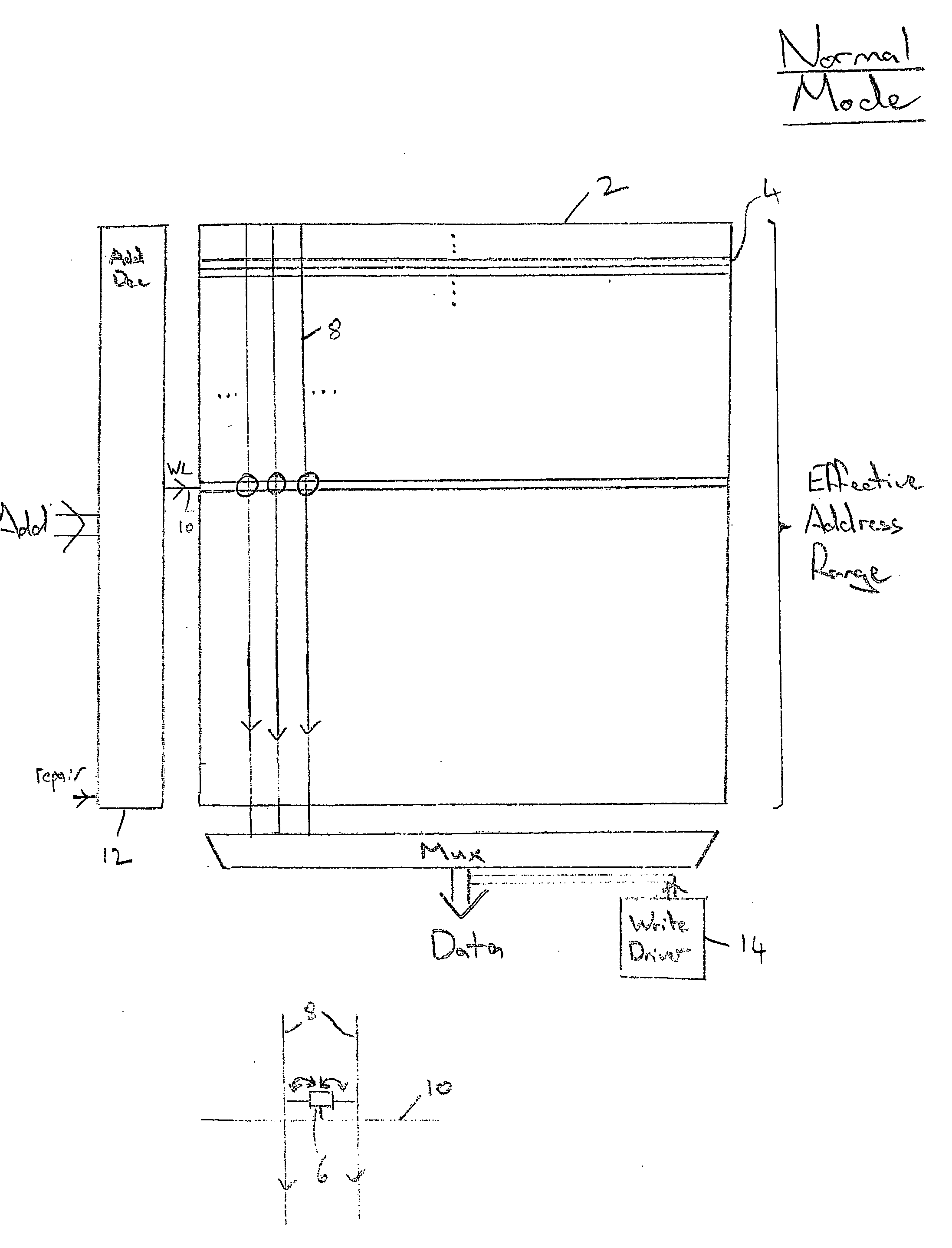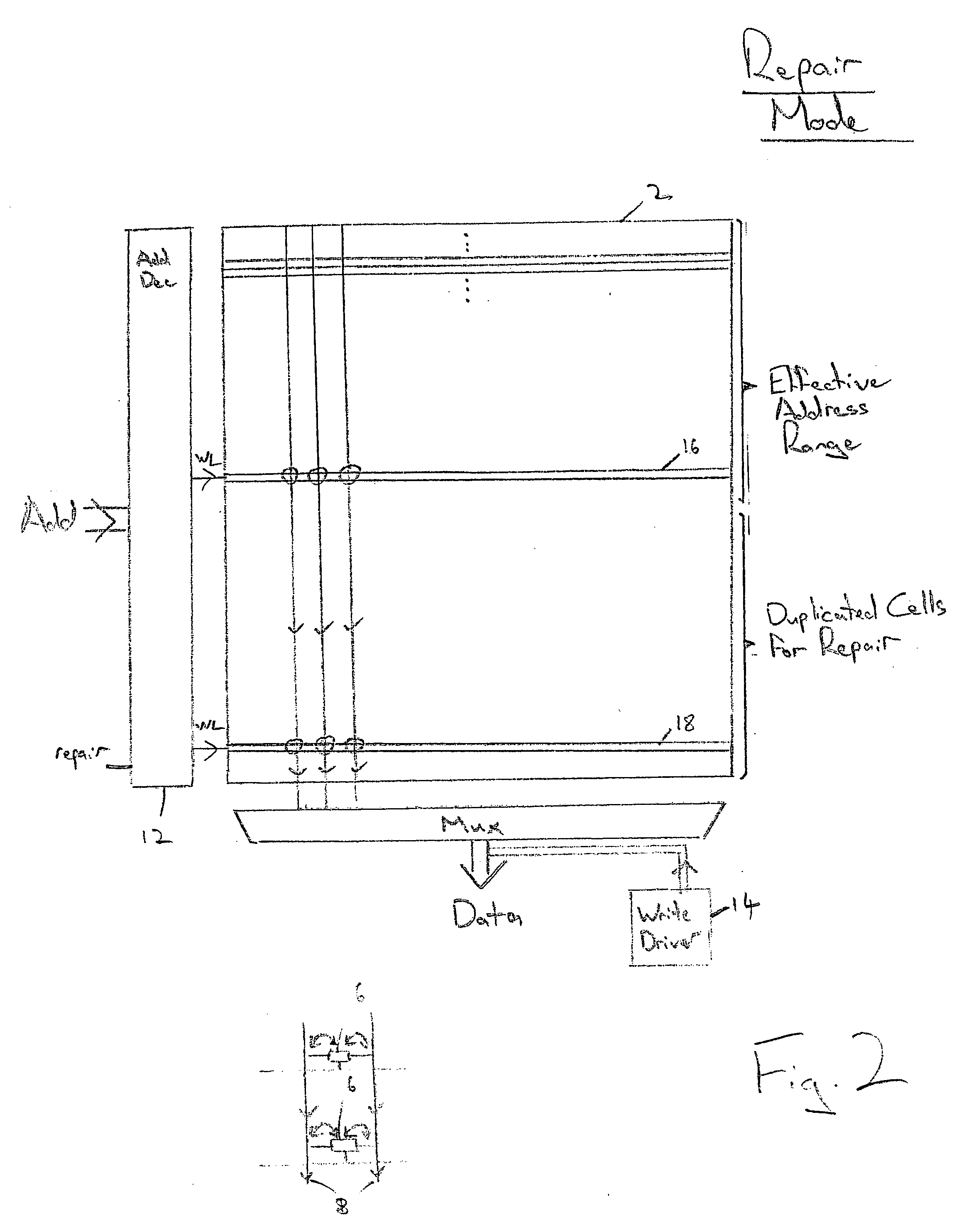Repairing integrated circuit memory arrays
a technology of memory arrays and integrated circuits, which is applied in the direction of read-only memories, instruments, and static storage, etc., can solve the problems of inability to repair then, inability to provide redundant columns and rows, and inability to use integrated circuits, etc., to achieve the effect of simplifying the repair control circuitry, increasing read speed, and reducing write speed
- Summary
- Abstract
- Description
- Claims
- Application Information
AI Technical Summary
Benefits of technology
Problems solved by technology
Method used
Image
Examples
Embodiment Construction
[0045]FIG. 1 schematically illustrates a memory array 2 comprising a plurality of rows of memory cells 4. An individual memory cell 6 is shown in expanded form coupled to a bit line pair 8 and a word line 10. It will be appreciated that the memory array 2 can be considered to be formed of a plurality of rows of memory cells, those memory cells also lining up to form a plurality of columns of memory cells 4. The memory cells of a given column of memory cells are coupled to the same bit lines 8 which run along the column. The memory cells 6 within a row of memory cells 4 share a common word line 10. When an address decoder 12 decodes an input address (or part of such an address), it operates in a normal mode of operation to generate a single word line select signal on a single word line 10 which connects the memory cells 6 within that row with the bit lines of their respective columns. When the memory cells 6 are connected to the bit lines 8, data can be read out of the memory cell 6 ...
PUM
 Login to View More
Login to View More Abstract
Description
Claims
Application Information
 Login to View More
Login to View More - R&D
- Intellectual Property
- Life Sciences
- Materials
- Tech Scout
- Unparalleled Data Quality
- Higher Quality Content
- 60% Fewer Hallucinations
Browse by: Latest US Patents, China's latest patents, Technical Efficacy Thesaurus, Application Domain, Technology Topic, Popular Technical Reports.
© 2025 PatSnap. All rights reserved.Legal|Privacy policy|Modern Slavery Act Transparency Statement|Sitemap|About US| Contact US: help@patsnap.com



